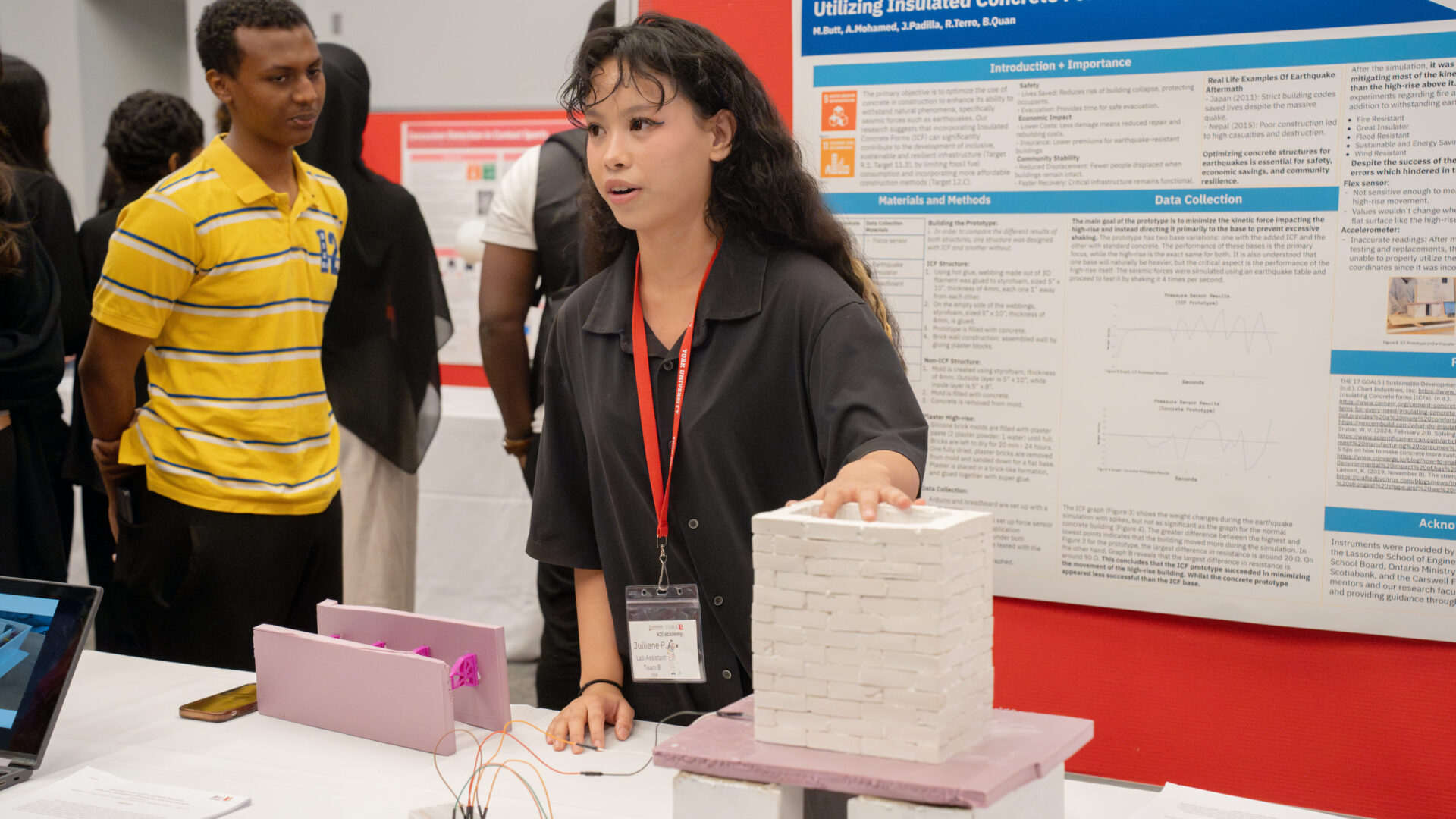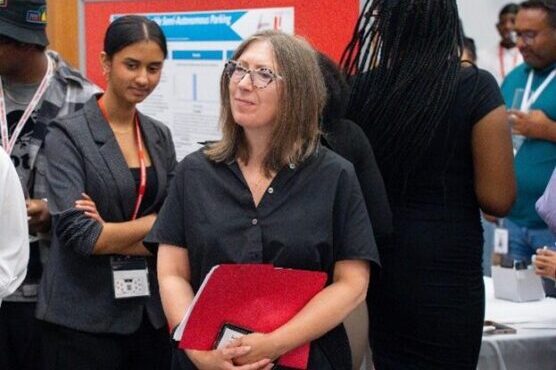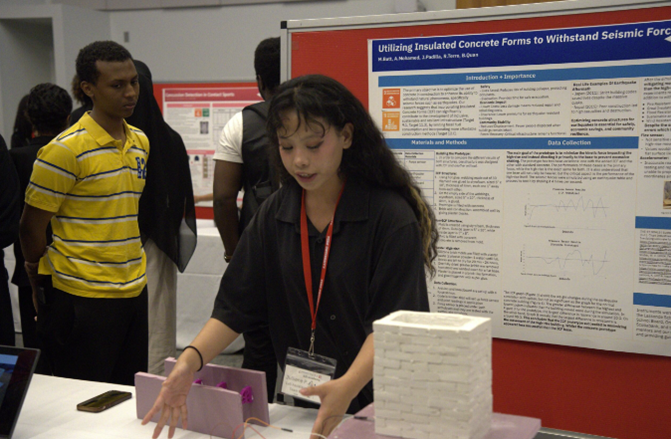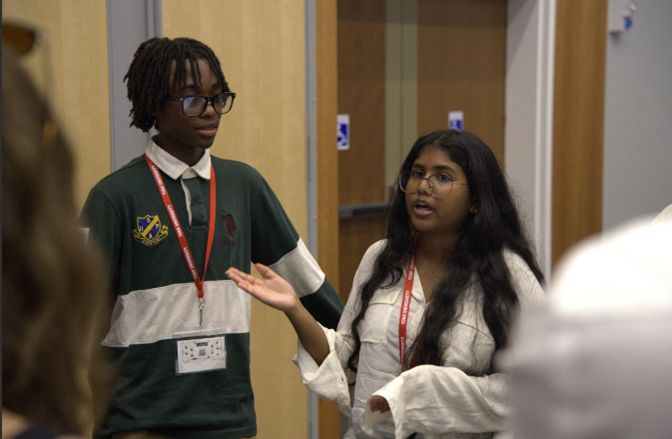Celebrating young innovators: Lassonde hosts k2i academy’s Bringing STEM to Life symposium
Tags:

In early August, York University’s Lassonde School of Engineering hosted its k2i (kindergarten to industry) academy’s Bringing STEM to Life symposium, celebrating the efforts of students who participated in the academy’s work-integrated learning program. During the summer, the Bringing STEM to Life: Work-Integrated Learning program offers students entering grades 10, 11 and 12 the chance to engage in paid research internships aligned with the United Nations’ Sustainable Development Goals (UN SDGs), all while earning an Ontario high school course credit in Grade 11 University Physics or Grade 12 University English.
120 High school participants took on the role of lab assistants, working on cutting-edge projects and innovative technologies, like wearable health monitoring devices and space surveillance systems. They were mentored by a team of 45 undergraduate STEM students, k2i academy staff, Lassonde faculty and graduate students, and high school physics and English teachers, who offered essential guidance and support.
The k2i academy’s Bringing STEM to Life program is made possible through partnership with the Ontario Ministry of Education and collaborations with the Toronto District School Board, York Region District School Board and Peel District School Board. The program is also supported by funding partners including 407 ETR, Scotiabank, KPM Power and the Carswell Family Foundation.
“Together, we’re creating opportunities for young people to tackle real-world challenges—many of which are being addressed by our own researchers,” says Lassonde School of Engineering Dean Jane Goodyer. “By empowering 45 undergraduate STEM students to work alongside faculty, graduate students, and k2i staff, these mentors have not only gained valuable leadership skills but have also inspired 120 ‘lab assistants,’ just a few years younger, to consider the benefits of STEM programs. Connecting students from similar neighbourhoods and backgrounds, many of whom are underrepresented in these fields, can create a powerful multiplier effect in driving systemic change.”


Left: Lassonde Dean Jane Goodyer listening to presentations at the Bringing STEM to Life symposium. Right: Lisa Cole, Director of k2i academy, presenting at the Bringing STEM to Life symposium.
By creating an ecosystem of diverse partners, the Bringing STEM to Life: Work-Integrated Learning program is designed to transform student experiences and offer exceptional educational opportunities, particularly for learners from marginalized backgrounds and low-income households. Through this program, k2i academy strives to engage and inspire students, demonstrating that their potential is limitless.
“The Ministry of Education is proud to be in partnership with the k2i academy to support Bringing STEM to Life. This program bolsters students’ research skills in STEM while providing students from equity seeking groups the opportunity to be included, to participate and be successful in STEM spaces and in their academic pathways,” says Giselle Basanta, Assistant Deputy Ministry of the Education Equity and Governance Secretariat. “It is through this type of partnership that we can continue to create spaces for youth to feel uplifted and supported in their educational journey.”
The concluding symposium provides students with the chance to present their work, while developing professional skills and mobilizing research to broader communities. From pioneering AI tools for medication management to improving the health of forest ecosystems with innovative satellite technologies, these bright young minds applied their creativity and budding expertise to tackle real-world challenges. Projects not only showcased students’ technical skills, but also highlighted their commitment to creating a more just and sustainable world by addressing UN SDGs.
“I most enjoyed the hands-on aspect of my research project as it allowed me to apply theoretical knowledge to real-world problems,” says a high school lab assistant in the Bringing STEM to Life: Work-Integrated Learning Physics program. “Building a prototype was challenging and needed lots of iterations but we felt accomplished in the end. I felt really supported by the mentors and I liked all the equipment.”


Students presenting their work at the Bringing STEM to Life symposium.
As the k2i academy’s impact grows, it aims to continue equipping young minds with the tools to drive meaningful change in STEM education. The Bringing STEM to Life program is just one of many initiatives that intend to foster the next generation of problem solvers and innovators. To date, the academy has successfully launched numerous initiatives reaching more than 80,00 students, teachers and families through nearly 400,000 hours of programming.
“Over the past four years, we have been able to grow this program to provide opportunities for students who have opted out of STEM pathways to reconnect,” says Vanessa Ironside, program officer for k2i academy. “It is amazing to bring together a dynamic team and work alongside our youth to imagine what is possible when we provide access and opportunity in innovative ways.”